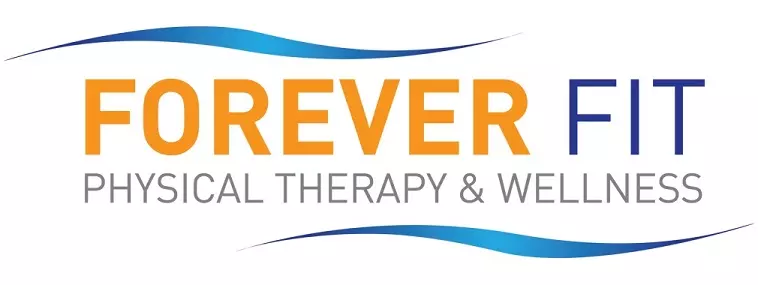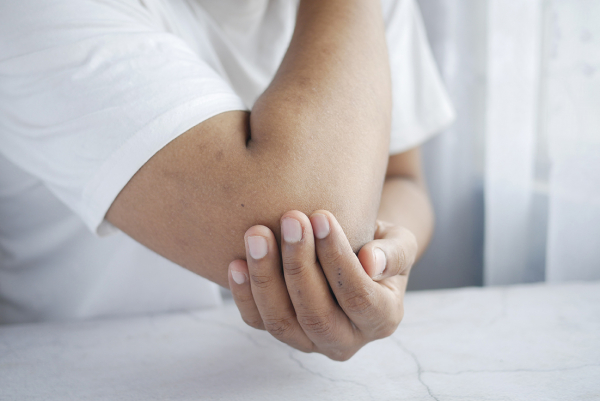If you’ve ever experienced stiffness in the elbow, then you know just how frustrating it can be. This lack of mobility can impact even the most mundane tasks, like brushing your teeth or putting on a coat. At times, this stiffness is accompanied by pain and even weakened grip strength.
When this kind of elbow stiffness occurs without indication of an injury, it makes matters even more frustrating. Why is your elbow stiff if you haven’t bumped into anything, fallen or lifted anything heavy?
In the following article, we discuss the most common reasons why you can’t straighten your elbow, even without an injury. We’ll also discuss possible treatment options for bringing you the relief you want.
Common causes of elbow stiffness without injury
The causes of elbow stiffness without injury are varied. The condition may be caused by overuse, inflammation or shifts in the joint itself. Below, we’ll explore the five most likely reasons why you may be suffering from a lack of mobility in the elbow.
-
Tennis elbow
One of the most common reasons why people experience stiffness in the elbow is a condition referred to as “tennis elbow” or lateral epicondylitis. This condition typically develops over time as a result of repetitive motions such as gripping, twisting or swinging the forearm.
While the condition typically develops as a result of more physically demanding activity, it can also occur as a result of less intensive tasks such as cooking, painting or plumbing. Repeated motion can lead to undue stress in the tendon that connects your forearm muscles to the outer part of the elbow. This contributes to inflammation, pain and, ultimately, stiffness in the elbow.
-
Elbow bursitis
Elbow bursitis is usually indicated by pain and swelling around the elbow. The condition occurs when the small fluid-filled sacs called bursae that cushion the elbow become irritated or inflamed. The inflammation is usually visible at the tip of the elbow and is often accompanied by pain or tenderness.
The bursae are meant to help reduce friction between the joints and soft tissues during movement. Sometimes, though, pressure or repetitive motions can cause it to fill with excess fluid and swell. The condition can also arise as a result of leaning on the elbow for long periods or infection.
-
Osteoarthritis
Osteoarthritis is typically more common in the weight-bearing joints, such as the knees and hips, but that doesn’t mean that the elbows cannot be affected, too. Elbow osteoarthritis usually occurs when the cushions that support the joint wear down over time.
This condition will typically arise as a result of overuse. People in labor-intensive jobs are the most commonly affected. Over time, the swelling of the elbow joint may increase, subsequently leading to pressure on the nearby ulnar nerve, which can lead to pain.
-
Nerve compression
Nerve compression can make it difficult to extend your elbow and may lead to numbness, tingling or weakness in the ring and pinkie fingers. This condition occurs when the pressure is placed on the ulnar nerve, which is near the elbow. Not only does this condition result in nerve pain but it can lead to muscle loss if not treated. One of the most commonly occurring forms of nerve compression is cubital tunnel syndrome.
-
Soft tissue tightness from inactivity
Among the major causes of elbow stiffness is, of course, excess activity. It may come as a surprise, then, that inactivity can also lead to stiffness in the elbow. Not moving the elbow enough, especially after surgery, illness, or a long bout of inactivity, can result in the muscles, tendons or ligaments stiffening up.
Symptoms that accompany elbow stiffness
If you notice any of the following symptoms, then it may be an indication of elbow stiffness:
- Feeling of the elbow locking
- Puffiness around the joint
- Mild pain with movement
- Tingling in the fingers
- Weak grip strength
If your symptoms do not improve with time, consider seeking out a physical therapist because early intervention can improve outcomes.
How can physical therapy help with elbow stiffness without injury
If you’re dealing with chronic elbow stiffness, it may be time to consider connecting with a physical therapist who can support you in improving your mobility and comfort. At Forever Fit, we are passionate about helping clients reduce tension and boost mobility in the upper extremities.
Our licensed physical therapists utilize strengthening exercises, joint mobilization, and the Graston Technique®, among other science-backed techniques to not only build strength in the biceps, triceps and grip but reduce stress on the elbow overall.
If you’re in Severna Park, Frederick, Gaithersburg, or other areas of Maryland, don’t hesitate to seek out care. Stiffness in the elbow, especially when it occurs without a clear sign of injury, can be incredibly frustrating. It does not, however, have to be persistent and debilitating. With proper care, this condition can be alleviated, and you can return to your old routines.
Want to get started? Contact our team to learn more or schedule your first consultation.

